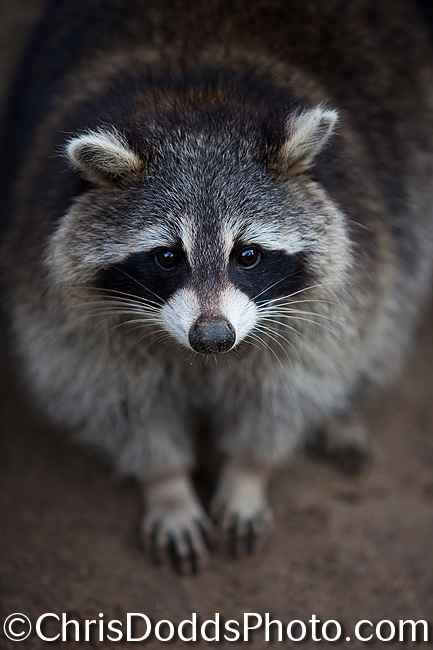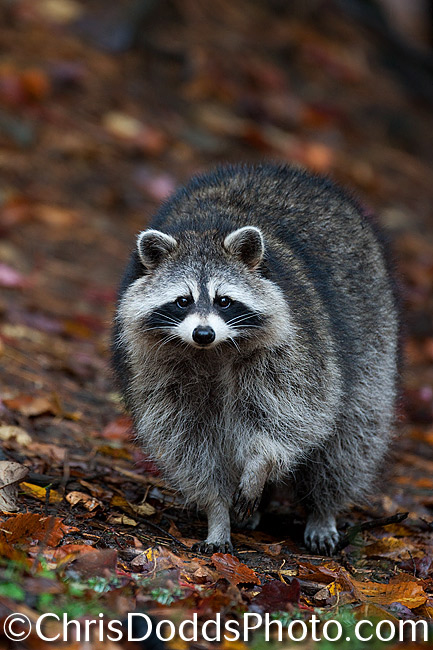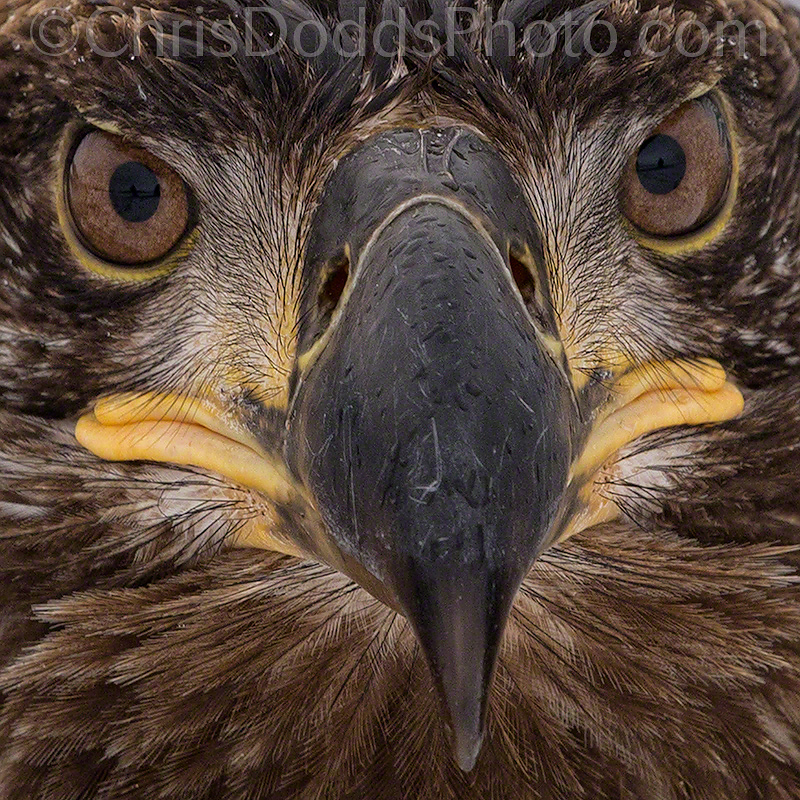 Common Raccoon (Procyon Iotor, raton laveur) Quebec, Canada ©Christopher Dodds www.chrisdoddsphoto.com All Rights Reserved. Canon EOS 5D Mark II, 70-200mm @ 195mm. ISO 400, F2.8 1/1000s Manual Mode.
Common Raccoon (Procyon Iotor, raton laveur) Quebec, Canada ©Christopher Dodds www.chrisdoddsphoto.com All Rights Reserved. Canon EOS 5D Mark II, 70-200mm @ 195mm. ISO 400, F2.8 1/1000s Manual Mode.
Pro Tip: I'm amazed at the number of photographers out in the field today, and even more amazed at the inventory of professional camera gear they cart around with them. Many pay the hefty price, and carry the extra weight of fast lenses, rarely using them at their intended extremes. Try using your F2.8 lenses at F2.8, then try them at F16; while it is true that they are not quite as sharp at F2.8 than, say F4.5, or F5.6, I would bet money that you can't tell the difference with a full frame Canon 1DsIII and all of the pixels it has to offer. Try using your depth of field (or lack of one) to hide or accentuate different features, or areas, of your subject. A shallow depth of field is especially useful when photographing captive animals: I can't tell you how sick I am of looking at "snapshot" style captive images from "serious" photographers - mostly the result of too much depth of field with cluttered backgrounds.
 Common Raccoon (Procyon Iotor, raton laveur) Quebec, Canada ©Christopher Dodds www.chrisdoddsphoto.com All Rights Reserved. Canon EOS 1DsMark III, 500mm F4 IS. ISO 800, 1/160s F4 Manual Mode.
Common Raccoon (Procyon Iotor, raton laveur) Quebec, Canada ©Christopher Dodds www.chrisdoddsphoto.com All Rights Reserved. Canon EOS 1DsMark III, 500mm F4 IS. ISO 800, 1/160s F4 Manual Mode.
The black mask across their eyes and ringed tails are the keys to identifying the "backyard bandit" of Southern Canada and much of the United States. Raccoons, Procyon Iotor, are amazing climbers and swimmers that den in hollow trees and spend the night foraging for food. When these masked marauders move into the suburbs, they become experts at opening garbage cans (waste bins).
Not true hibernators, Raccoons do sleep through much of the winter. By February, the mating urge sends the males on a quest regardless of the weather. Nine weeks later most females have three to six kits.
Comments welcome & appreciated.




